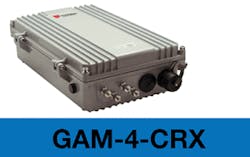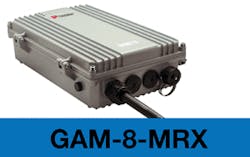Multifamily Gigabit as Essential Service
Creative Options to Serve Small MDUs and Home Clusters —
Gigabit services delivered exclusively over fiber often bypass MDUs and garden home clusters because of the construction disruption and the high cost of bringing fiber inside each housing unit.
Gigabit Internet Access is now seen as an essential service by an increasing number of tele-workers, remote learners, building owners, and even Operators. The year-over-year increase in people working or studying from home will continue to increase — and the availability of an up-to-Gigabit high-speed Internet service is now more important than the commuting time to work or school.
According to the most recent multiple dwelling units (MDUs) data available from the U.S. Census Bureau (for 2017), the number of small to medium MDUs (2 to 19 doors) represents 16% of the total number of housing units, in comparison to barely 8% for the larger units. 95% of these units were built more than 15 years ago, which further complicates deploying fiber inside these buildings.
Yet, the focus of the broadband industry has been with serving only recently built, larger MDUs and multiple tenant units (MTUs) with in-building fiber infrastructure installed during the construction phase. Thankfully, network operators are now able to offer the same services in older buildings by turning to G.hn to deliver fiber or fixed wireless Gigabit over the in-building telephone or coax wiring. This has multiple benefits over a fiber-only strategy that requires a massive investment to pass every door and many subscriber sign-ups to achieve economies of scale.
InvisiLight® Solution for Deploying Fiber
April 2, 2022Go to Market Faster. Speed up Network Deployment
April 2, 2022Episode 10: Fiber Optic Closure Specs Explained…
April 1, 2022Food for Thought from Our 2022 ICT Visionaries
April 1, 2022Small-Medium MDU Deployment Challenges
Given the age and construction types of MDUs with fewer than 20 doors, there are multiple
deployment challenges. The first challenge is one of density. Given the small number of doors, the solution needs to scale from a very low number of subscribers. This prevents the use of fiber that
requires a high-density of subscribers and makes the business case for GPON extremely difficult.
The second challenge is that typically there is no wiring closet in the building. The solution needs to be installed outdoors, near the telephone pair demarcation point (Main Point of Entry, or MPOE) or where the coaxial taps are reachable. This is typically on the outside of the MDU or near the curb, where the fiber feed terminates. The same complexity applies to a fixed wireless radio solution used to bring the gigabit signal to these buildings.
The ideal Gigabit distribution solution needs to be deployed outdoors. This means it must be hardened (IP67) and should not require a local power source since local power sources are complex and costly. The third challenge is therefore the ability to power the G.hn Access Multiplexer (GAM) from the subscribers’ end. This is known as reverse power feeding (RPF). (See sidebar for more detail.)
[toggle title=”Reverse Power Feeding 101″ load=”hide”]Reverse power feeding (RPF) is a technology standardized by ETSI and the Broadband Forum. It allows sending power from customer premises to a GAM. RPF is a critical technology for powering outdoor GAM, and reduces installation costs by removing the need to connect to power and monitor power consumption with a meter.[/toggle]
The fourth and final challenge relates to the complexity of having a field technician entering the premises for installation or service calls. It is important to enable subscribers to self-install equipment in their apartments with no need for assistance, and to provide extensive remote troubleshooting capabilities.
G.hn Supports Creative Solutions
Apart from older brownfield MDU, Garden-style homes are notoriously challenging to cost effectively serve. Homeowners associations resist the deployment of fiber because of the impact on existing infrastructure and landscape.
The ITU-T G.9960 G.hn Wave-2 standard leverages the existing telephone wiring (UTP, CAT-3 or CAT 5/5e) or RG-6/RG-59 coax cabling (each coax port serves up to 16 subscribers) to deliver a Gigabit Internet service to each apartment inside an MDU or MTU without the cost, complexity, and delays, associated with in-building fiber installation.
Network operators turn to G.hn to simplify their access network with an Ethernet-like technology to deliver advanced services, such as Gigabit high-speed residential Internet and 4K IPTV. G.hn eliminates the high capital and operational expenses associated with a fiber retrofit. Each G.hn subscriber port supports up to 1.7 Gbps of dynamically allocated bandwidth for near-symmetrical gigabit services.
An interesting characteristic of G.hn ports is their dual operation, either as a domain master (usually GAM devices) or as an endpoint (terminating the G.hn link and converting to Gigabit Ethernet).
Thus, the ideal solution for those housing units with fewer than 20 doors, meets the numerous
challenges discussed previously.
• The right GAM with RPF support delivers Gigabit speeds without entering a building.
• The solution does not require construction work and the resulting disruption.
• The RPF support eliminates the need for an outdoor power source, and allows GAM devices to be installed where the fiber or fixed wireless access terminates — be it a manhole, a rooftop, or a utility pole.
• Finally, the best solution allows for self-install, so a technician’s work is a lot simpler and truck rolls can be reduced to the initial installation trip of the GAM.
One solution is Positron’s GAM (G.hn Access Multiplexer). It connects to, and extends, multi-Gigabit feeds from fiber (xPON) or fixed wireless access radios. These devices support a unique daisy-chain capability in which the first device connects to a fiber or fixed wireless multi-Gigabit feed, and then creates a distribution downlink to a next device using 2 (out of 8) G.hn ports. The next GAM in the chain then serves an average of 4 homes on the existing telephone pairs, and uses the remaining 2 G.hn ports to feed another downstream GAM. (See Figure 1.)
Figure 1. Daisy-chain capability of outdoor GAM devices
A typical installation sees a chain of 3-8 devices deployed at each existing copper pedestal (each serving a small number of homes) located every 300-500 feet to extend gigabit services over several thousand feet.
This approach eliminates the disruption from the deployment of fiber while ensuring performances on par with a GPON feed with a 1:32 splitter architecture.
Gigabit Delivery Options
Delivering Gigabit services to small MDUs, medium MDUs, and home clusters, has its challenges. It is time to reconsider the strategy and the underlying technologies and distribution mediums to achieve a solid business case and a positive return on investment with the fastest time to revenue.
A creative solution that is deployed outdoors can address the 4 challenges providers face as they aim to serve MDUs:
Challenge #1: Reuse existing wiring to avoid construction costs and the resulting disruption to the building.
Challenge #2: Serve the building from the outside in to avoid entering the building and to eliminate the need to find a suitable indoor installation location.
Challenge #3: Leverage RPF to eliminate the cost and complexity to install an outdoor power source.
Challenge #4: Let new subscribers install the in-home devices themselves, and offer a self-serve subscription portal to facilitate the initial activation and any changes in the future. This puts the control into the hands of a service provider’s customers, and eliminates the need for technician visits and additional truck rolls.
Overall, a provider can deliver a more natural and better quality of experience to subscribers
with G.hn. (See Figure 2.) Leveraging this creative solution providers can meet the demand for dynamic bandwidth allocation in the upstream and downstream directions to satisfy the needs of end users for working remotely, distance learning, and overall entertainment.
Like this Article?
Subscribe to ISE magazine and start receiving your FREE monthly copy today!
About the Author








